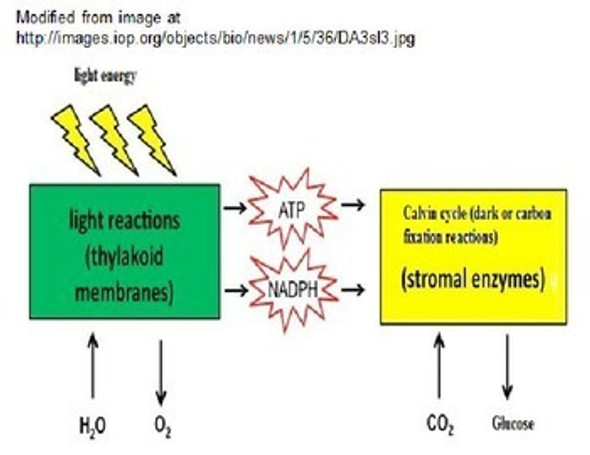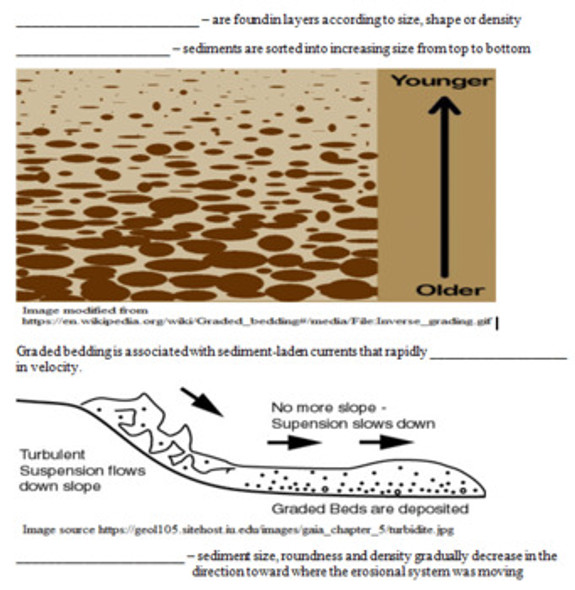Description
This zip file contains activities (107 pages of student handouts) which can be used to compose a unit on Interpreting Earth's Geologic History. Concepts that are addressed include but not limited to include; law of superposition, cross-cutting features, relative and absolute dating, methods of correlation, radioactive dating, selected environments of rock formation, aspects of evolution and key events in the Earth's evolutionary history. The learning objectives and specific contents of this set of materials is listed below. This set of activities is suited for many earth science, environmental science or physical science classes. With teacher guidance, many components in these materials are adaptable to an enriched middle level science curriculum.
All documents are in PowerPoint, word or pdf format to allow you to edit the documents to meet your needs. Most of the activities in this package of activities are well suited and easily modified for use in distance learning environments. Answer keys for all student activities are provided.
The specific contents of materials in the package are as follows:
- Learning Goals and Objectives (Including NGSS, Common Core and NY State Earth Science Core Curriculum) (3 pp.)
- Interpreting Geologic History Completion Notes (19 pp.)
- PowerPoint to accompany the Completion Notes (includes 7 closure/ticket out activities) (71 slides)
- Constructing a Geologic Timeline Lab Activity (3 pp.)
- Modeling Radioactive Decay Lab (4 pp)
- Relative Dating Worksheet 1 (10 questions) (4 pp.)
- Relative Dating Worksheet 2 (34 questions) (14 pp.)
- Absolute Dating, Correlation and Earth History Worksheet 1 (45 questions) (11 pp.)
- Absolute Dating, Correlation and Earth History Worksheet 2 (50 questions) (14 pp.)
- Interpreting Geologic History Worksheet (using the NY State reference table) (60 questions) (18 pp.)
- Interpreting Geologic History Exam (50 questions) (15 pp.)
- Interpreting Geologic History Jeopardy PowerPoint Game (31 questions) (74 slides)
Learning Standards and Objectives
NGSS Standards: (addressed in whole or in part) HS-ESS1-6. and HS-PS1-8.
Common Core State Connections:
ELA/Literacy: WHST 9-12.1, RST.11-12.1 and RST.11-12.8
Mathematics: MP.2 and MP.4
Learning Objectives
Upon the completion of this unit the student will be able to:
1. recognize the earth's oldest rocks are about 4.6 billion years old.
2. state what is shown by a geologic map.
3. explain the difference between relative dating and absolute dating.
4. state the law of superposition and apply this law to relative dating.
5. explain what is meant by an intrusion and recognize it is younger than the rock it intrudes into.
6. explain how contact metamorphism occurs.
7. explain what an extrusion is.
8. recognize an extrusion is younger than the rock it is found on.
9. explain what an inclusion is.
10. recognize an inclusion is older than the rock it is found in.
11. recognize that cross-cutting features, such as faults, joints, tilting, folds or intrusions are younger than the rock layer they appear in.
12. explain what is meant by a vein.
13. recognize the sediments composing a sedimentary rock are older than the rock.
14. explain why a contact metamorphism is younger than the rocks it appears in.
15. recognize the Precambrian era existed for about 87% of geologic history.
16. state two reasons relatively little is known about the Precambrian era.
17. recognize humans appeared very recently near the end of the geological record.
18. recognize that over 99% of the species that have ever existed are now extinct.
19. explain what is meant by an unconformity.
20. explain how an erosional unconformity is created.
21. recognize unconformities leave gaps in the rock record.
22. describe how unconformities can be useful in relative dating.
23. describe the concept of uniformitarianism
24. define the term correlation.
25. explain how distinctive rock formations may be used in correlation.
26. explain what is meant by a fossil and list some categories of fossils.
27. explain what is meant by an index fossil.
28. discuss why index fossils are useful for correlation.
29. explain what key beds are.
30. discuss why volcanic ash and debris from large celestial objects may produce key beds.
31. explain how key beds may be used for correlation.
32. discuss the possible formation and significance of the k-t boundary.
33. understand that a fossil is assumed to be the same age as the rock it is found in.
34. define the terms element and isotope.
35. state one difference between alpha decay and beta decay.
36. explain how radioactive isotopes are used in the absolute dating of rocks and fossils.
37. define the term half-life
38. recognize half-life of a substance is not altered by the quantity of that radioactive substance or environmental factors.
39. discuss why different radioactive isotopes are used for dating different substances.
40. recognize radioactive decay of an element will continue indefinitely.
41. perform simple calculations involving half-life.
42. recognize ocean rocks are younger than most continental rocks.
43. list some examples where fossils found in rocks are used to infer ancient environments.
44. recognize marine fossils found in mountain rocks imply that uplift has occurred.
45. define the term species.
46. describe the process of natural selection.
47. define the term organic evolution.
48. compare and contrast the theories of gradualism and punctuated equilibrium.
49. recognize that at least five mass extinction events have occurred during the earth's history.
50. describe some possible events forming the solid earth, oceans and atmosphere.
51. define the term outgassing.
52. explain why the formation of the ozone layer was required for life to exist on land.
53. recognize that multicellularity, respiration using oxygen and sexual reproduction required billions of years to evolve.
Terms of Use
Purchase of the product is for classroom use by the purchaser only. It is a violation for individuals, schools, and districts to redistribute or sell this item on the Internet or to other individuals. I do encourage you to use and edit these documents to suit your needs with your own students in distance learning environments.
This work is licensed under a Creative Commons Attribution-NonCommercial-ShareAlike 4.0 International License.











